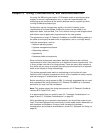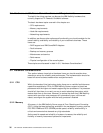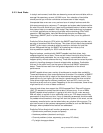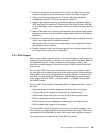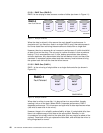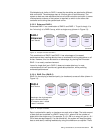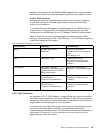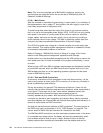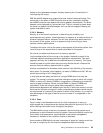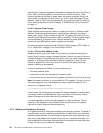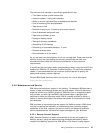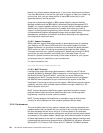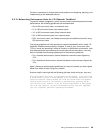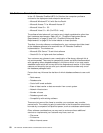
Sizing, Considerations, and Recommendations 43
adapters. Also available for the IBM ServeRAID adapters are a range of battery
backed cache options to provide even greater stability to your customer’s data.
5.2.5.6 RAID Summary
RAID should always be considered when availability and file size of business
critical data is an issue. Individual requirements will dictate the final RAID
solution for the customer.
In all cases there are advantages and disadvantages of each RAID solution in
practical terms. These should be considered when selecting your hard disk
configuration for the IBM Netfinity and J.D. Edwards’ OneWorld implementation.
Refer to Table 2 for an overview of advantages and disadvantages of RAID
solutions. You should review 5.2.6, “Fault Tolerance” for further details regarding
overall fault tolerance of the system.
Table 2. IBM Netfinity Hardware Considerations
5.2.6 Fault Tolerance
As discussed in 5.2.5, “RAID Support” on page 39 there are limits to availability,
and fault tolerance capabilities that various RAIDs can offer within the system by
themselves. This section will look at other ways of offering fault tolerant solutions
to get closer to the ultimate goal of 100% availability.
If we look at the most likely failures, given the history of IT technology, then we
can start to look at the gain on reliability and availability versus cost of
implementing the relevant solution. The most likely failures are discussed here in
some order of "likely to fail", as this order can vary from country to country
dependent upon many local factors.
Considerations Advantages Disadvantages
RAID 0 Very high read and write
performance
Failure must be dealt with
immediately with loss of access to
users
Data integrity - low
RAID 1 Data integrity - high Degrades performance
(two writes for each data write)
Expensive, size of single disk is
limitation
Disk Duplexing Data integrity - very high
Performance is greater than RAID 1
Higher fault tolerance than RAID 1
Second disk controller
Single disk is size limitation
Expensive - 2x disk capacity for data
Enhanced RAID 1 Data integrity - very high
High fault tolerance
No reboot on single disk failure
Performance impact
Performance - parity/checksum
overhead
RAID 5 Data integrity - very high
High fault tolerance
No reboot on single disk failure
Performance impact
Performance - parity/checksum
overhead



